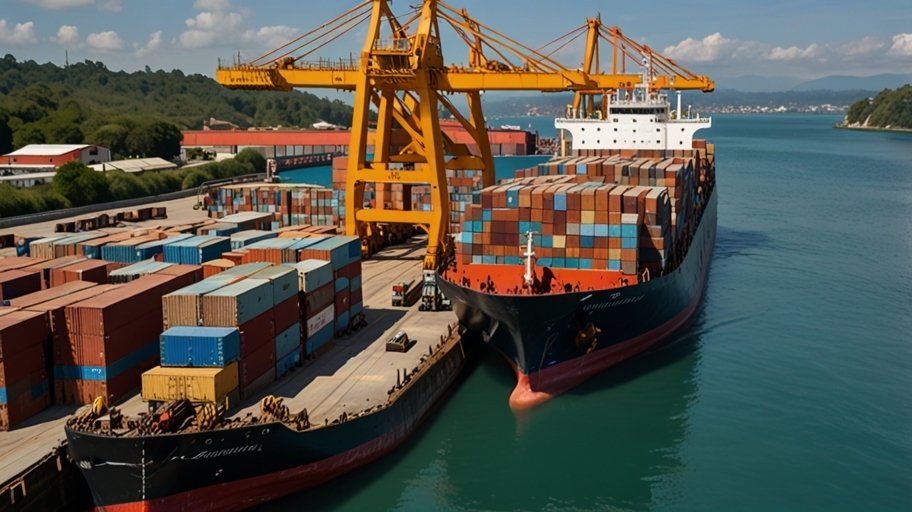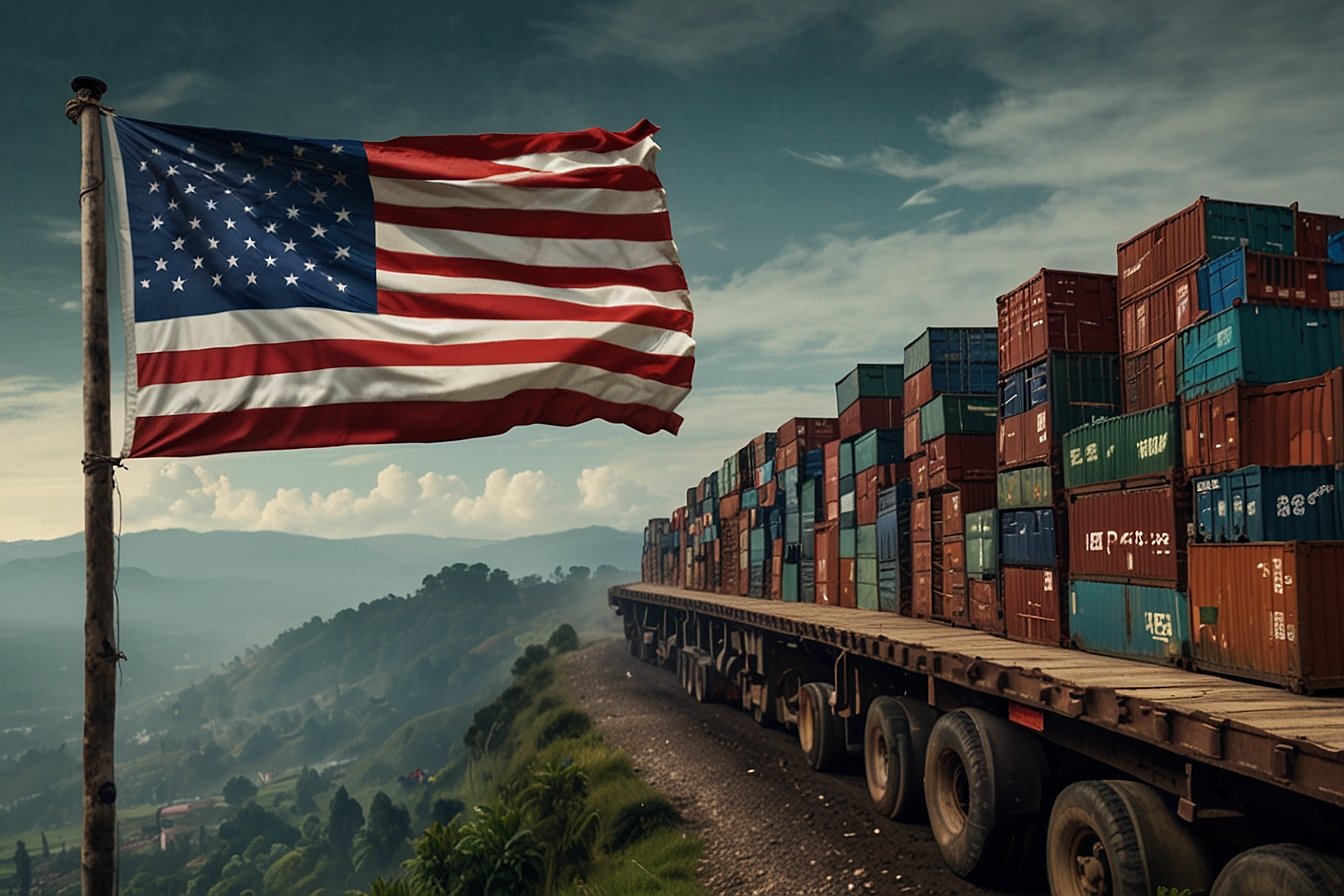Guatemala is a Central American country with a deep cultural heritage and an equally complex history. Relations between Guatemala and the US are multileveled in many regards, considering various aspects, such as geography, history, trade, and migration. Among these aspects, from all its considerations, among its most important issues are its migrations and its problems on trade with the United States. These two areas are inevitably connected and have implications for the economies and societies of both countries, as well as broader geopolitical and human rights concerns. The article analyses US-Guatemala relations, with special emphasis being placed on migration and trade issues that remain central to this bilateral engagement.

Historical Context of US-Guatemala Relations
Guatemala has had a very long history of involvement with the United States, but there have been many troublesome US political and economic interferences that have made the two nations’ relationship tumultuous. The United States has, for decades, viewed Guatemala and the other Central American states as falling under its influence, but especially did so during the Cold War. One of the landmark moments that defined contemporary US-Guatemalan policy occurred in 1954 with the coup by the US Central Intelligence Agency to oust Guatemala’s democratically elected president, Jacobo Árbenz. Árbenz had begun land reforms that were threatening to the interests of the United Fruit Company, a US-based corporation that had significant portions in Guatemala. This coup led to decades of military dictatorship, civil war, and instability in the country. Such historical events have deeply imprinted in the social and political aspect of Guatemala, thereby causing waves of migration and impressing trade policies between the two countries. As much as the Cold War seems to be long gone, its legacy continues to shape contemporary migration patterns and economic relations.
Migration: A Humanitarian and Policy Challenge
The Root Causes of Migration
For several decades, the larger issue of immigration into and across the United States from Guatemala has been influenced by the intricate interaction of multiple factors, from poverty and violence to corruption and lack of economic opportunities. By some indicators, it is one of the most impoverished countries in Latin America, where more than half of its population lives below the poverty line. Clearly, inequality in Guatemala is stark in terms of the education, healthcare, and availability of basic services, as cut from distribution over rural and indigenous populations.
Violence, particularly gang-related violence, has also been a leading migration driver. Criminal groups, like the notorious MS-13 and Barrio 18 gangs, still hold significant power in several parts of Guatemala, particularly in cities and towns. This violence affects youth more than others, because many are leaving due to their connection with gangs or often due to accusations of involvement in the gangs. The inability of the government of Guatemala to hold effective action against such groups, sometimes by corruption or lack of resources, has contributed to this rising crisis.
Environment factors-again through the ripples of climate change-push Guatemala forward. Natural calamities, such as hurricanes and floods, and droughts, hit the destitute poor rural communities farming mostly for subsistence purposes. Such sensitivity to the shocks moves more to seek better opportunities elsewhere. Many of the settlers take the dangerous trek north to the United States.
The Journey and Human Rights Issues
They are among the most dangerous journeys migrants undertake from Guatemala as well as neighboring countries of Central America to reach the United States. These trips pose extreme threats, such as extortion, human trafficking, and violence from criminal groups operating on migration routes. Many of the migrants travel in huge numbers; they kind of form caravans with hopes of getting safer among them, but this is never the case as they are exposed to so many dangers that they face during such journey.
The US country is also at risk of being exploited for women and children cases related to sexual violence and human trafficking. The majority of these immigrants have been seeking asylum in the US because of a threat on their lives from Guatemala, which serves as the main cause behind their mass exodus. Regardless, US immigration policies remain in flux; lately, under the Trump administration, it has become increasingly difficult to gain access to the US and claim asylum.
The US has used several policies to address the migration crisis. Some include increasing border security, building physical barriers, and negotiating an agreement with a country such as Guatemala to take asylum seekers. In 2019, Guatemala signed a “safe third country” pact with the US, which made migrants who passed through Guatemala acutely obligated to apply for asylum in that country before applying to the US This deal was problematic because Guatemala’s asylum system is under-resourced and incapable of processing the bulk of claims coming its way. Although the Biden administration later rescinded the agreement, this agreement marked a form of complex and sometimes contentious relationships in migration policies between the two countries.

Economic Impact of Migration: Remittances
Even if dangerous and arduous, many Guatemalans who reach the United States are able to send remittances back to their families. The remittances appear to be a very important component of the country’s economy and represent about 14% of the GDP. Most of these funds help in offsetting poverty for many families and are therefore required as means to sustain basic needs such as food, housing, healthcare, and education. However, mitigation, reliance on remittances can mask the underlying economic issues that drive migration in the first place, such as the lack of sustainable job opportunities and poor infrastructure in Guatemala.
The US has used the leverage of remittances at times to compel policy changes in Guatemala by threatening to impose exchange controls over money transfers, in order to force the Guatemalan government to do more to curb migration. This kind of strategy brings out the complexity involved in interplays between migration and economic dependency within US-Guatemala relations.
Trade Relations: Economic Ties and Challenges
The US-Central America-Dominican Republic Free Trade Agreement (CAFTA-DR)
Trade between Guatemala and the US falls under the US-Central America-Dominican Republic Free Trade Agreement, in place since 2006. CAFTA-DR was intended to eliminate barriers in trade between the US and the Central American countries of which Guatemala is a member. This will eventually spur economic growth through higher exports and foreign direct investment.
The US is still Guatemala’s biggest trading partner under the CAFTA-DR as it accounts for about 40% of Guatemalan exports and imports. Major exports from Guatemala to the US include bananas, coffee, sugar, vegetables, and textiles and apparel. On the other hand, Guatemala has imported machinery, chemicals, and consumer goods from the US.
As such, the impact CAFTA-DR has had on the country’s development process remains mixed, although the export sector has opened new economic opportunities. The real benefits have appeared to trickle down to few large corporations and export-oriented industries and not at all to small farmers and indigenous communities. Third, the subsidized farm products from the US, particularly corn, flooded the local market where local farmers cannot compete with cheaper imports. The impact would be the rural displacement that associates with the migration crisis.
Economic Dependence and Vulnerability
Guatemala is also open to fluctuations in US policy and global market conditions because the US has now become its biggest trading partner and a major destination for remittances. Changes in US demand for Guatemalan exports, changes in immigration policy, or anything that disrupts the flow of remittances could pose huge shocks to the country’s economy.
For instance, the COVID-19 pandemic drastically affected world trade as the exports from Guatemala to the US have been severely derailed; the recession that occurred in the US during the time of the pandemic reduced the share of remittances brought back to Guatemala therefore deepening the poverty and economic insecurity. These happenings highlight the risks that come with growing an economy through dependence on one foreign market and hence Guatemala should diversify its economy and strengthen its domestic industries.

Efforts to Promote Economic Development and Reduce Migration
The Guatemalan government and the US acknowledge the relation between economic development and migration and have pursued policies intended to eradicate the causes of migration through the encouragement of economic development and enhancing security in Guatemala. The US has provided foreign aid to Guatemala in recent years that serves to enhance the rule of law, combat corruption, and stimulate economic development, especially in rural areas.
For example, the Alliance for Prosperity is an initiative under which programs launched during the Obama administration are promising to reduce migration from Guatemala and other Central American countries by ending the push factors of poverty, violence, and a lack of opportunity. However, these programs have thus far been hamstrung by corruption, poor governance, and lack of adequate funding. Included in these efforts are renewed efforts to address the root causes of migration. The Biden administration has provided billions of dollars in aid to Central America and collaborated with the government of Guatemala to combat corruption while improving economic conditions.
Conclusion: A Complex and Evolving Relationship
Guatemala’s relationship with the United States is at once both cooperative and tense, especially on issues of migration and trade. Highly defined deep-seated problems, such as poverty and violence, have caused a constant migration to the US from Guatemala with humanitarian, policy implications, while CAFTA-DR trade has opened economic opportunities but exposed vulnerabilities of Guatemala’s economy in the global sphere.
These issues are tried to be resolved, but the improvements are slow and uneven. Despite differences between the two countries, they must find their converging economic interest and humanitarian concerns: the future of their relation is committed to surmounting together the root causes of migration and sustainable economic development. The US and Guatemala must persist in navigating these very sensitive issues as the bilateral relationship will continue to be a pivotal influence on how the area develops into the future.
